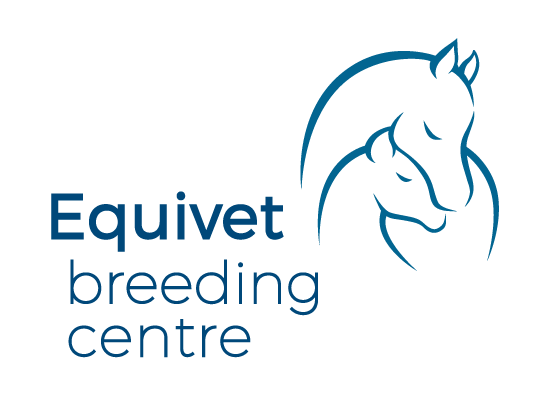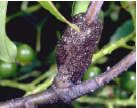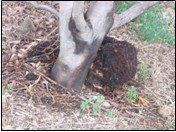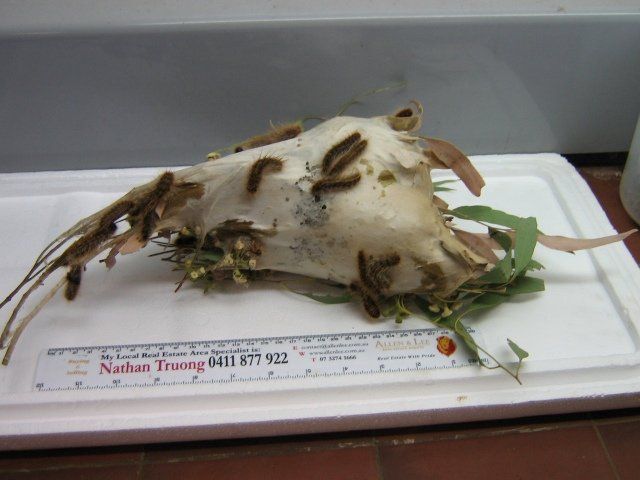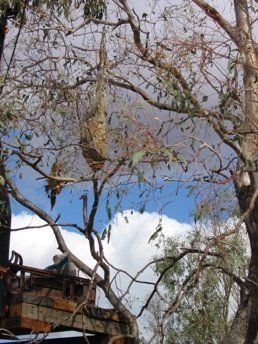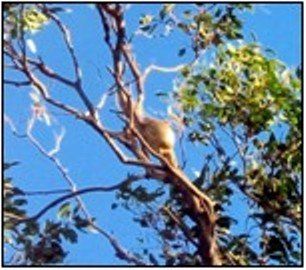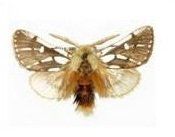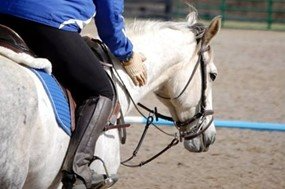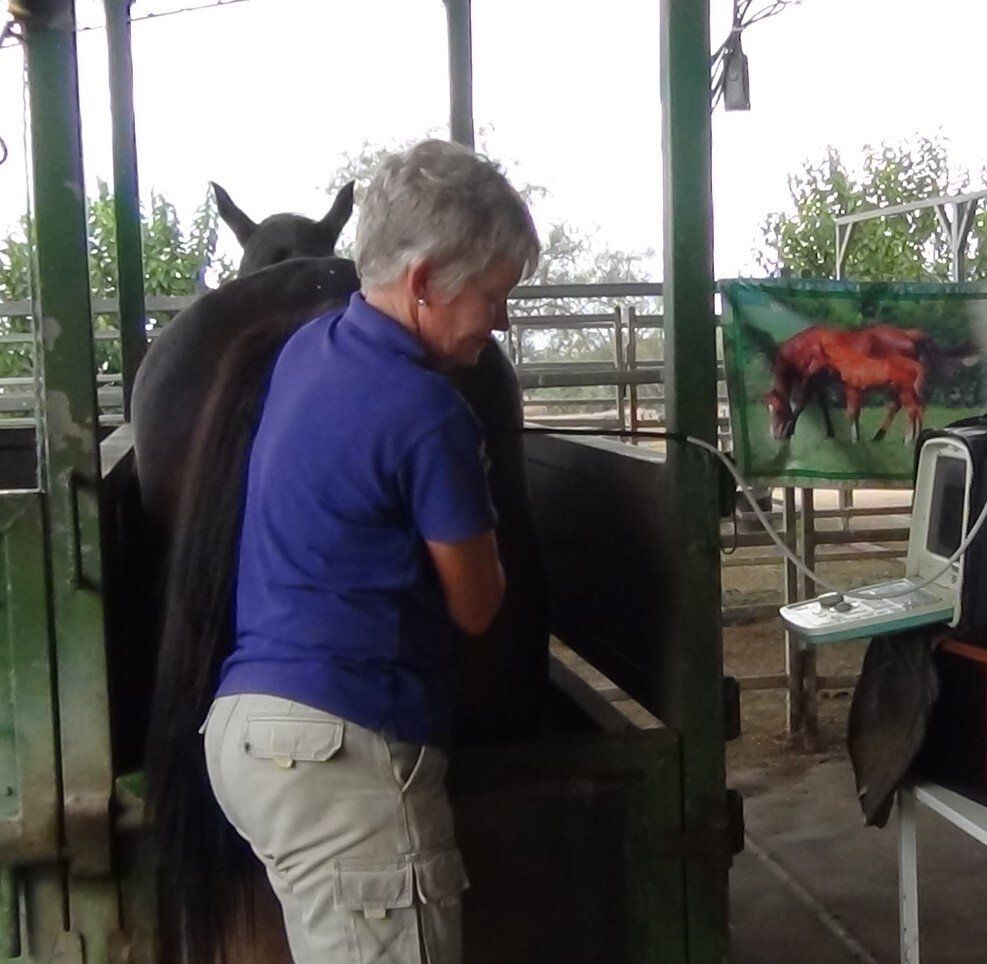During 2005/2006 studies at the University of Queensland showed that exposure to preparations made from the processionary caterpillars (or their shed exoskeletons) were responsible for causing pregnancy loss in the mare or deficits in the newborn foal. Shed exoskeletons accumulate in the nests as the caterpillars pupate. When the caterpillars leave the nest to migrate, the nest frequently disintegrates and falls onto the ground. See Fig.1. The exoskeleton is light and fragile and as it falls can easily drift onto surrounding pasture where it can be picked up by grazing horses.
The results of this Queensland study indicate that the barbed fragments from the setae (small hairs) of the exoskeleton may penetrate the intestinal wall and allow bacteria into the bloodstream thereby causing infection of the placenta and subsequent abortion.
CATERPILLAR FACTS
Processionary caterpillars - Ochrogaster lunifer (processionary caterpillar) and Leptocneria reducta (white cedar moth caterpillar) - have been found in large numbers on many broodmare farms in southern Queensland and northern New South Wales. The natural hosts of the caterpillars are eucalypt and acacia species, including the mountain coolibah, white box, white cedar, and wattles commonly found in eastern Australia. Late summer / autumn is the season when the caterpillar nests can be seen hanging in the trees as a silken bag. See Fig. 2. A caterpillar colony can consume the foliage from an entire tree before moving on, however the defoliated tree usually recovers.
The caterpillars are grey & hairy with a brown head. See Fig. 3.
When the caterpillars emerge from the nest & go looking for a new host tree they can form a procession of up to 100 caterpillars on the ground and travel long distances. See Fig. 4. Caterpillar exposure is more likely in times of drought when mares resort to grazing areas under trees as feed becomes scarce.
Exposure to hairy caterpillars can cause an intense allergic reaction in humans resulting in quite severe skin shes. In properties where abortions have occurred it has been reported that some horses grazing under trees populated with caterpillars displayed skin reactions, however not all mares that aborted showed detectable abnormalities.
PREVENTIVE METHODS
There is some evidence that when mares are known to be in contact with caterpillars giving blanket treatment with antibiotics on a regular basis throughout the pregnancy may be effective in preventing abortion due to infection. However this method would be both time consuming and very expensive.
Another method would be to inject the infected trees with systemic insecticides to kill the caterpillars eggs. This would not be effective unless there is rainfall and the sap is running in the trees, and again the cost and doubtful efficacy would suggest that alternatives would be preferable. In some cases insecticides can be sprayed on to foliage, which will make direct contact with the caterpillars and cause them to die.
RECOMMENDATIONS
- Remove mares away from pastures where known caterpillar habitat trees are present, or leave a large margin when fencing off areas with affected trees.
- Any supplementary feeding of mares should be done away from trees using elevated feeders to reduce the risk of contamination.
- Remove caterpillar nests from the trees in February/March before the caterpillars leave the nests and dispose of them immediately or the caterpillars may burrow into the ground and disappear. A cherry picker can be used for this purpose if the trees are tall, but cost may be prohibitive.
- Replace the trees with others that are NOT the natural food of the caterpillars.
